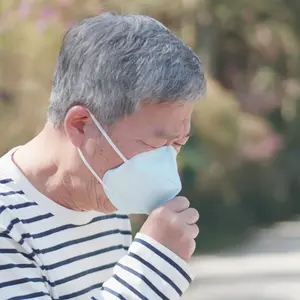

Exercise, Energy and Movement

Exercise, Energy and Movement
Functions and Health Benefits of Sweating
Sweat, or perspiration, is one of the regulatory mechanisms that takes place in the body to keep us safe, healthy, and functioning properly. Sweat helps the body with thermoregulation, detoxification, and even helps with our ability to communicate with others.
There are three types of sweat glands in the human body: eccrine, apocrine, and apoeccrine. Eccrine glands produce sweat that is mostly water and electrolytes. Apocrine and apoeccrine glands develop from eccrine glands before and after puberty and produce sweat that also contains other components including ammonia, protein, and lipids.
Thermoregulation
Sweat helps the body maintain equilibrium despite changes in the environment (e.g., sweating on a hot summer day to keep our core temperature within a safe range). When we sweat, heat is transferred from the body to the skin, and evaporation cools us down.
Sweat also helps regulate core body temperature during exercise. Studies have shown that sweat production is enhanced through regular exercise due to changes in factors like gland size and output, which improves one’s ability to exercise for longer periods of time without overheating. A 2014 study looked at long-distance runners and found that the time of sweat onset was shorter compared to their sedentary counterparts. They also found 34—46% greater sweat rates compared to controls when all participants engaged in a cycling protocol.
Detoxification
Sweat is also an important means of detoxification. Sauna has long been used across cultures for its health benefits, and research is finding a link between sauna use and reduced mortality risk. Sauna use has also been associated with a lower risk of neurodegenerative disease such as Alzheimer’s disease as well as cardiovascular disease fatality.
Sauna therapy and exercise have been included in detoxification protocols for military, law enforcement, and other workers exposed to occupational hazards. A 4—6 week detoxification protocol to support veterans suffering from Gulf War Illness (GWI) included exercise, sauna therapy, and nutritional supplementation. After the program, participants noted improvements in pain, mental health, and general health, with 50% of participants no longer meeting the Kansas criteria for GWI after completing the program. Gamma-glutamyl transpeptidase (GGT), a biomarker that can be used to assess toxic burden, was mildly decreased and remained lower for three months after completion of the program.
The same detoxification protocol was used in a separate study to support police offers involved in methamphetamine lab investigations. After completion of the protocol, study participants had statistically significant positive changes in all sections of a health survey. Significant decreases were also found in severity of cognition, immunity, musculoskeletal, and neurological symptoms. Participants also experienced an increase in their average nightly sleep, from 5.8 to 7.6 hours, and a decrease in average days per month of poor physical health, from 9.3 to 1.8 days.
The benefits of sweating are not just for populations that have been acutely exposed to toxicants; given the wide range of toxicants in our daily lives that can bioaccumulate over time, modalities that include sweating can benefit many people. In a Blood, Urine, and Sweat (BUS) study, researchers found that flame retardants (which can be found in plastics, polyurethane foam, construction materials, and household dust) were not excreted in urine, but five common substances were excreted through perspiration.
Some metabolites of phthalates (another toxicant found in plastics, but also used in nail polish, shower curtains, and vinyl flooring) are also excreted in sweat but not found in blood; in the same BUS study, the sweat concentration of mono-2-ethylhexyl phthalate was twice that of urine levels. Some polychlorinated biphenyls (PCBs) were also found in sweat.
Studies have shown that sweat can also induce the excretion of heavy metals, including cadmium, lead, arsenic, and mercury.
Communication
A lesser-known function of sweat is as a mode of communication. Feelings such as happiness and fear influence sweat production, and these emotions can be perceived by others due to volatiles in the sweat. Men are frequently used in studies that look at chemosignals in sweat because their apocrine glands are larger, and women are often used as the chemosignal receivers because they are generally thought to have a better sense of smell and ability to perceive emotions.
These chemosignals are thought to help promote safety within groups, as individuals who are unaware of potential danger will receive a signal to remain vigilant.
In several studies, men who watched parts of horror films produced more underarm sweat compared to when they watched a nature documentary. In another study, female university students were asked to play a computer game and press the escape key when they noticed a change in the game. As they played, they were exposed to chemosignals from male sweat. The participants pressed the escape key significantly faster when they were exposed to fear sweat as compared to neutral sweat, which may indicate a state of heightened readiness to respond to stimuli.
A randomized, double-blind, placebo-controlled study measured both male and female participants’ reactions to male stress sweat compared to male exercise sweat. Participants engaged in an emotional face recognition test and experienced greater activity in the amygdala and anterior cingulate cortex (parts of the brain that play a role in emotional processing) when exposed to the stress sweat.
The recognition of chemosignals has been recognized across cultures, with women from Portugal and the Netherlands experiencing the same facial activations when exposed to stress sweat in the aforementioned study. Another study of Chinese and Dutch women who were exposed to sweat samples showed an increase of vigilance in both the Chinese and Dutch participants.
Deodorants and antiperspirants reduce body odor and, as a result, disrupt the skin microbiome. It’s interesting to consider how this could affect our chemical communication with others; in some scenarios, such as a work presentation, it could be beneficial, as fear and stress may be more concealed. However, in scenarios with shared emotions such as happiness, it could impede a sense of connection.
REFERENCES
Minich, D. (2022, February 17). Perspiration is inspiration: The wonders of sweat. https://deannaminich.com/perspiration-is-inspiration-the-wonders-of-sweat


 By
By







